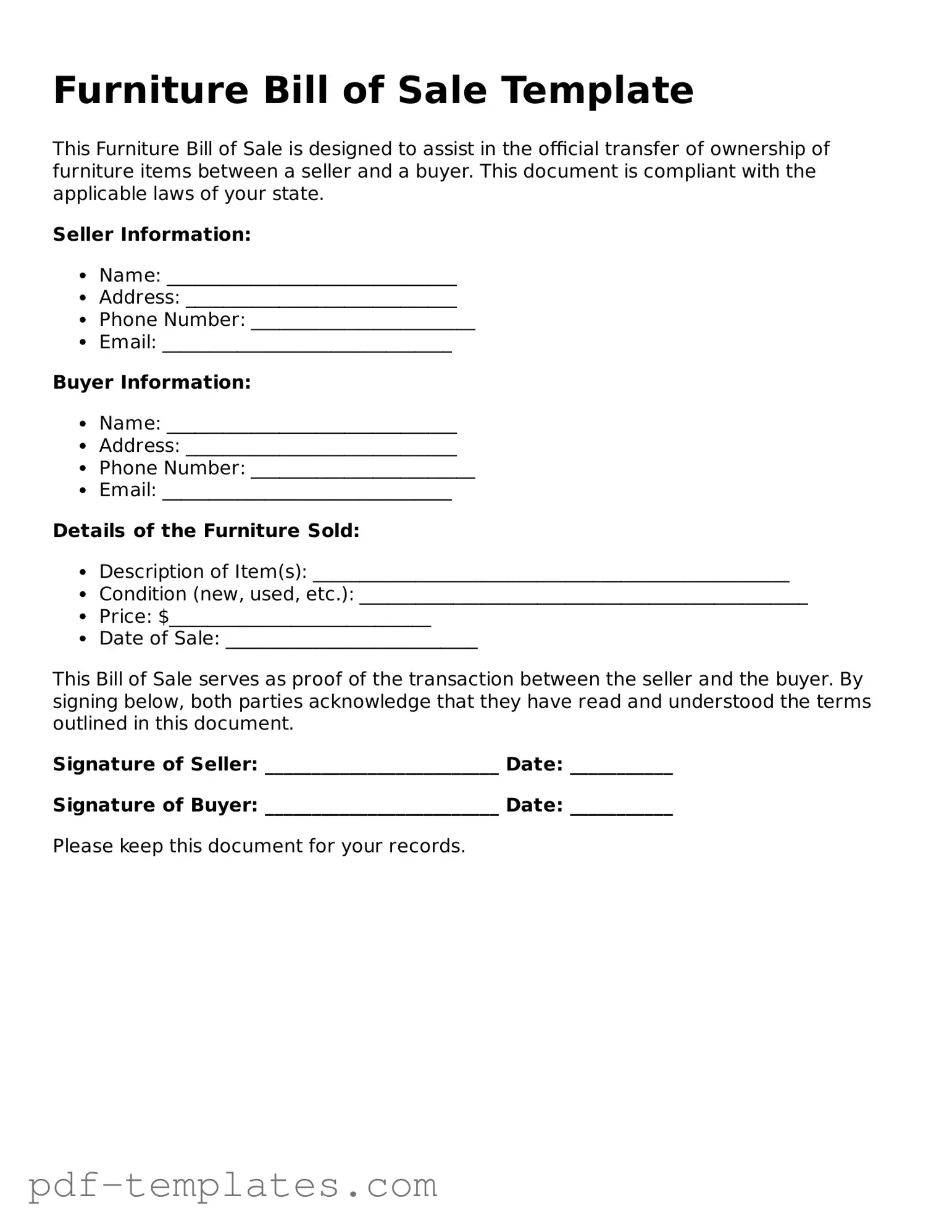The Furniture Bill of Sale form shares similarities with a Vehicle Bill of Sale. Both documents serve as proof of transfer of ownership, detailing the specifics of the item being sold, whether it be a piece of furniture or a vehicle. Each form typically includes the names and addresses of the buyer and seller, a description of the item, the sale price, and the date of the transaction. Additionally, both documents may contain a section for signatures, which signifies the agreement between the parties involved. This mutual acknowledgment is crucial for establishing legal ownership and can serve as evidence in case of disputes.
Another document akin to the Furniture Bill of Sale is the Equipment Bill of Sale. This form is utilized when selling equipment, whether for personal or business use. Much like the Furniture Bill of Sale, it outlines the seller's and buyer's information, a detailed description of the equipment, and the agreed-upon price. The purpose of both documents is to facilitate a smooth transfer of ownership while providing legal protection to both parties. The inclusion of warranty disclaimers or conditions may also appear in both forms, ensuring that the buyer is aware of the item's condition at the time of sale.
The Real Estate Purchase Agreement is another document that bears resemblance to the Furniture Bill of Sale. While it pertains to real property rather than personal property, both documents function to formalize a sale. They include essential elements such as the buyer's and seller's details, a description of the property or item, the purchase price, and terms of the sale. Both agreements aim to protect the interests of the parties involved, ensuring that all conditions are clearly outlined and understood. Additionally, both documents may require notarization or witnesses to add an extra layer of legal validity.
A Lease Agreement also shares characteristics with the Furniture Bill of Sale, particularly in its role in defining the terms of a transaction. Although a Lease Agreement typically involves renting rather than selling, it still outlines the responsibilities and rights of both parties. Like the Furniture Bill of Sale, it includes details about the item being leased, the duration of the lease, and the payment terms. This clarity helps prevent misunderstandings and provides a legal framework for both parties, ensuring that the terms are adhered to throughout the duration of the lease.
The importance of a General Bill of Sale cannot be overstated; it functions as an essential tool for facilitating the transfer of ownership for various personal property items. Whether you are selling furniture, electronics, or other assets, this document ensures transparency and security for both parties involved in the transaction. For those interested in accessing a template for this important legal form, you can find one at documentonline.org/blank-general-bill-of-sale/, which provides a clear framework to follow.
Lastly, a Personal Property Transfer Agreement is similar to the Furniture Bill of Sale in its function of transferring ownership of personal items. This document can cover a wide range of items, including furniture, electronics, and collectibles. It includes the names and addresses of both the buyer and seller, a description of the item, and the sale price, just like the Furniture Bill of Sale. The Personal Property Transfer Agreement serves as a formal record of the transaction, protecting both parties by clearly stating the terms of the sale and any conditions that may apply.
